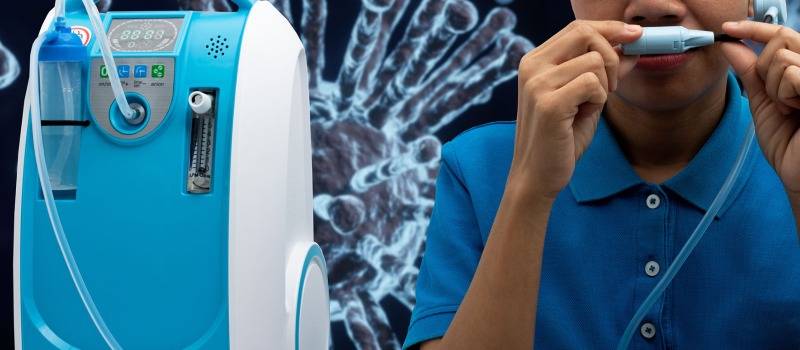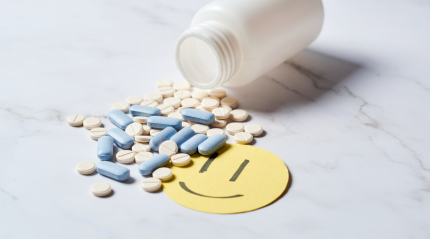Top Facts About Oxygen Concentrators
- 21 September 2022

If you're reading this, I assume that you're either already familiar with the concept of oxygen concentrators or you're thinking about investing in one. Maybe you're even wondering what makes them so special. If so, keep reading.
Oxygen concentrators are a type of blood oxygenator that uses an electrochemical process to convert atmospheric oxygen into liquid oxygen, which can be stored and transported easily. While other types of blood oxygenators use a membrane-based process, electrochemical oxygen converters allow for the production of more oxygen per unit of time. This makes them attractive to professionals who need to keep up with a rigorous schedule or others who do regular commercial air deliveries (post-flight activities, for example).
Here's a short list of interesting facts about oxygen concentrators that you may not know:
They Were Initially Developed For Underwater Use
It's often said that scuba gear was initially developed for underwater use, but that's quite an exaggeration. The first waterproof chest compression device was created in the 1930s, but it wasn't until the 1950s that most major countries started adopting the practice of recreational scuba diving. In fact, it wasn't until the early 1960s that the practice of recreational scuba diving started to become popular around the world. Prior to this point, the vast majority of people who needed oxygen therapy were either doctors, deep-sea divers, or military personnel. As a result, most people in need of oxygen therapy were either in a hospital or an aquatic environment (such as a pool or ocean).
In the 1960s, several manufacturers produced oxygen concentrators for underwater use. One of these was the Hirschmann company. While on the surface, the Hirschmann M-150 looks like just another oxygen concentrator, it was in fact developed for military use and equipped with advanced features such as an LCD display, auto-shutoff, and a back-lit display. In the event of a power loss, the Hirschmann M-150 can operate off of a battery for around three hours before requiring recharging. This makes it ideal for those who spend a lot of time underwater and need quick access to oxygen. Most recreational scuba divers still use a tank and a demand valve to generate high-quality liquid oxygen, but in the event of a power loss, they'd have to turn to an air compressor operated by another person (not ideal when you need your air to survive).
Oxygen Concentrators Are A Popular Choice For High-Altitude Users
People who live at high altitudes (above 10,000 feet) often rely on oxygen for survival. When air is scarce at these elevations, it can become quite expensive to buy the expensive equipment that most oxygen users rely on. As a result, many people prefer to have a portable oxygen concentrator in the event that they need it. When oxygen is transported via air, it is prone to becoming stale. This is why most high-altitude users prefer to have oxygen delivered to them directly from the source.
Most oxygen concentrators are designed for use above 10,000 feet, so if you're at or near that elevation, you'd have no problem using one. At these high elevations, air is quite thin, so even small changes in the pressure can cause serious oxygen deprivation. For these reasons, it is not advisable to operate a vehicle or power machinery above 10,000 feet, at least not without additional precautions (monitoring of blood oxygen levels and applying supplemental oxygen therapy when needed).
They Can Produce Up To 12 LPM Of Oxygen
Most of the oxygen that people consume on a daily basis comes from oxygen concentrators. Outside of the body's various oxygen-dependent processes, which range from brain function to muscle contraction, oxygen concentrators are responsible for producing up to 12 liters per minute of oxygen. If you're using a 12 V power supply and a 0.5 A circuit, you'll be able to produce up to 12 liters per minute, which is more than enough to satisfy your daily oxygen demands.
Oxygen concentrators aren't just limited to use by professionals. They are also popular with individuals who use oxygen therapy for a medical condition and with physical therapists who use oxygen to treat their clients. Many oxygen concentrators are also available in child-sized form, which makes them ideal for young children who need extra help breathing.
They Have A Longer Life Spent In Service
Oxygen concentrators don't just store oxygen, they can also be used to generate it. Once your oxygen concentrator is no longer able to produce 12 liters per minute, it can be serviced and/or upgraded to generate up to 15 liters per minute. The life expectancy of an oxygen concentrator depends on a number of factors, including the quality of the materials used in its construction and how well it is maintained over time. If you're looking for a reliable oxygen source that you can depend on for years of regular use, opt for an oxygen concentrator.
They Are Efficient
Many people think that using electricity to produce oxygen is inefficient, especially considering that the process requires a lot of energy. While this may be true on an atomic level, on a macro level, it is not. Most people who utilize oxygen generators for medical purposes could benefit from a more efficient approach to healthcare. For example, it takes around 10 liters of air to generate one liter of oxygen, so it's not efficient for someone with a large appetite to have to spend so much time eating or drinking just to stay alive. In these cases, it's better to have less efficient but more portable oxygen generators.
On the opposite end of the spectrum, someone who uses oxygen as part of their job can benefit from the highly efficient process used by oxygen generators. For example, a helicopter pilot who descends into a mountain town during lunch break to grab a coffee and a doughnut can benefit from the efficiency of an oxygen generator. Instead of having to carry all the oxygen needed for the duration of their stay in tanks or vests, they can use oxygen generators, which are small and light enough to be carried in their pocket or briefcase.
They Are Hygienic
Oxygen concentrators are extremely hygienic products because they don't just produce oxygen, they store it too. Storing oxygen in a contained space prevents almost all the risks associated with providing oxygen directly to the patient via a tube. Since most oxygen concentrators operate at a temperature below 135 degrees Fahrenheit, this makes them ideal for storing blood products and other biohazardous chemical samples. The interior of an oxygen concentrator is also designed to prevent any sort of contamination, so if the supply of oxygen is shut off while in use, there is minimal risk of exposing the operator to viruses or other pathogens.
They Are Easy To Maintain
Oxygen concentrators must be serviced and maintained on a regular basis to ensure that they continue to function properly. The majority of oxygen concentrators are designed to be easily accessed by medical professionals or physical therapists, who can perform routine maintenance or service procedures without having to dismantle the unit. Most manufacturers offer scheduled service intervals that can be performed by a professional, making this type of maintenance extremely affordable.
The parts for an oxygen concentrator are also quite easy to replace, which makes it an inexpensive product to maintain over time. This is in stark contrast to the expensive equipment that most people with cyanotic heart disease depend on, which requires special training to use on a regular basis.
They Are Portable
Portability is an important consideration for anyone who uses oxygen. When you need oxygen therapy, you don't always have the luxury of having a permanent or semi-permanent oxygen delivery system set up. This is why most people with pulmonary disease or physical handicaps prefer to have a portable oxygen generator in case they need it. Most individuals who use oxygen generators for work also carry them around with them in case they need additional breaths during breaks or as a temporary fix when the primary unit breaks down.
Even if you don't need it on a daily basis, you can still benefit from the portability of an oxygen generator. For example, if you have a medical emergency after hours and you don't have a hospital nearby that provides oxygen therapy, you can either wait for the ambulance to arrive or use a portable oxygen generator (more convenient and affordable). In the event of a power outage at your home, you can also rely on a power source that doesn't depend on electricity (like a hand-crank generator) to get the necessary oxygen to save your life.
As you can see, there are a lot of benefits to having an oxygen concentrator around. It's not just gas providers who need them, it's everyone!




